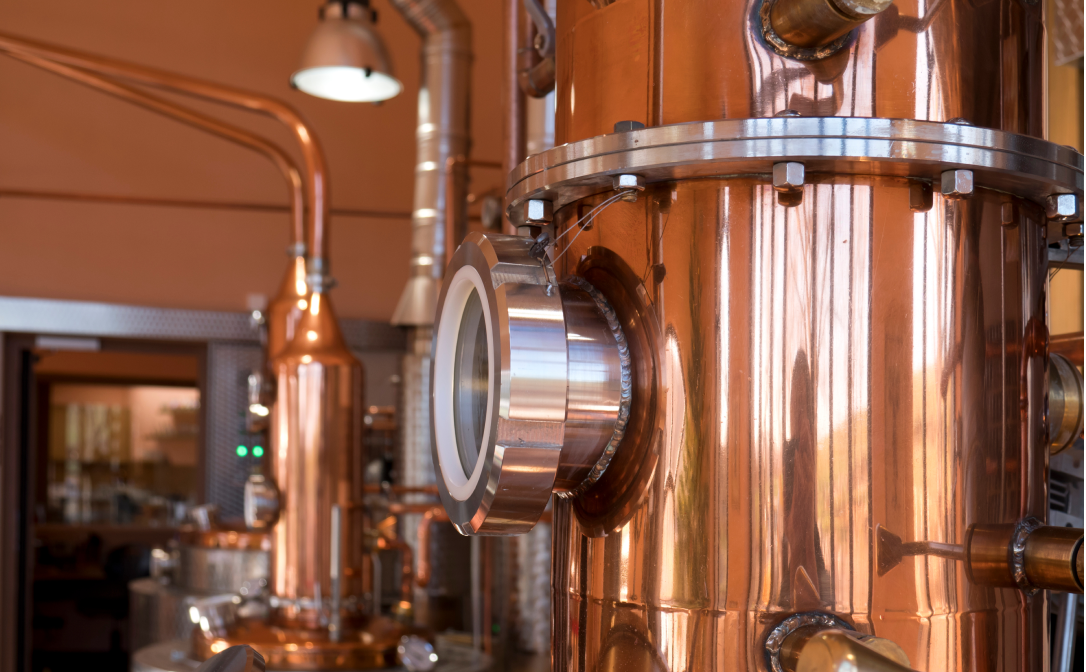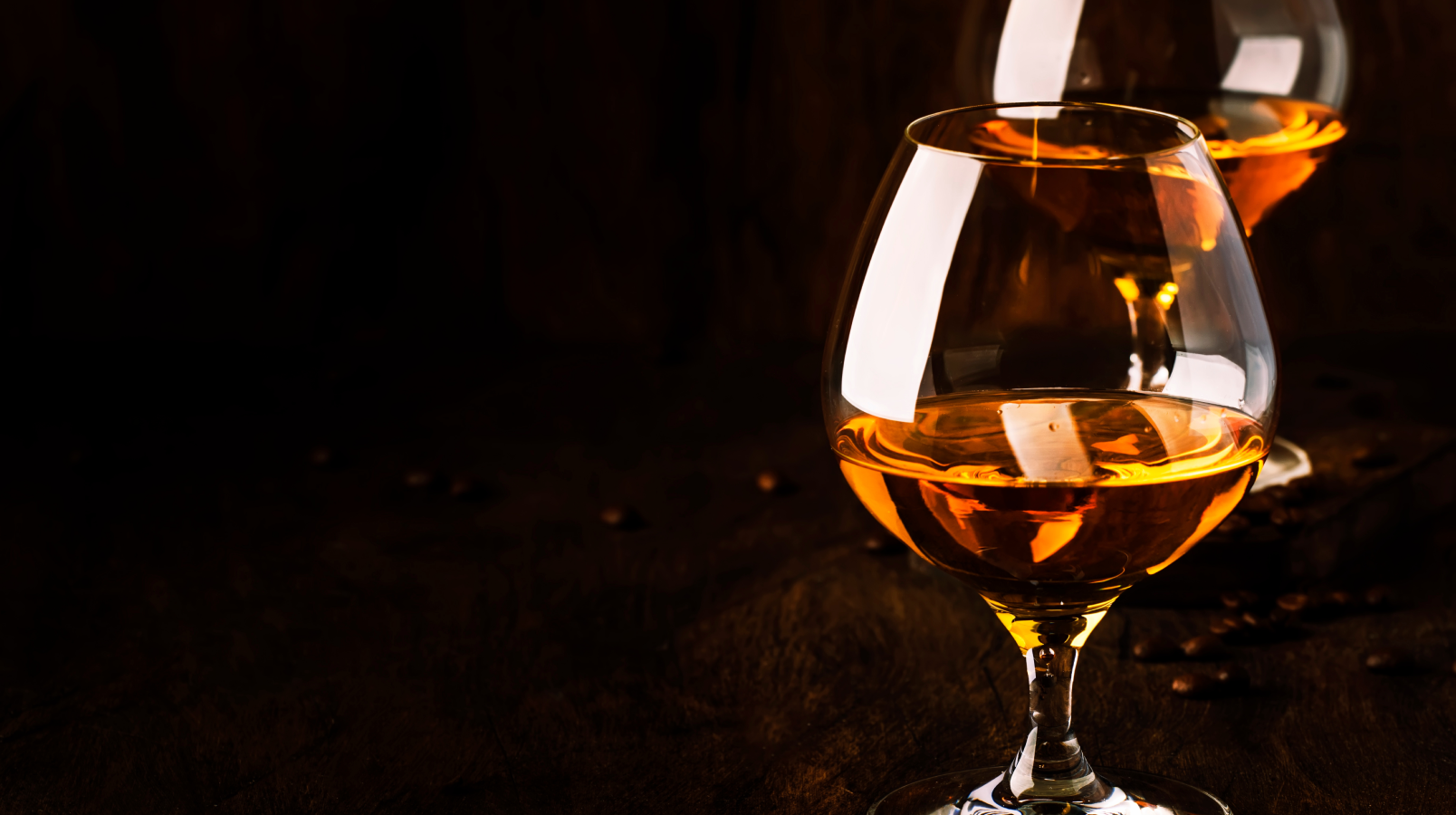While brandy is made all over the world, no other country has elevated fruit spirits quite like France. Everyone knows Cognac, naturally, but it's not the only game in town. There are two other French spirits with equally rich histories which tend to fly under the radar. It's time to discover Armagnac and Calvados.
Henry Jeffreys, award-winning drinks writer, is here to offer an introduction.
To learn more about the fundamental production methods of spirits and the principal raw materials, why not sign up for our Level 2 Award in Spirits?
What is Armagnac?
Armagnac is an inland region in Gascony, in south-west France with a continental climate of hot summers and cold winters. It has strikingly beautiful countryside of rolling hills, woods and small towns - the very definition of La France Profonde. The fiercely proud locals claim that their grape brandy is the oldest in France. There's a mention of the region's eau-de-vie in a document from 1310.
Nevertheless, today Armagnac is dwarfed by its rival to the north, producing annually around six million bottles to Cognac's 180 million. While Cognac is dominated by four big brands which are owned by multinational companies, Armagnac is more disparate with many producers also making wine, keeping livestock and growing other crops.
Armagnac is an Appellation d'Origine Contrôlée governed by the Bureau National Interprofessionnel de l'Armagnac (BNIA). There are three sub-regions: Bas Armagnac, containing around 3,500 hectares with sandy clay soils; Armagnac-Ténarèze which has 1,600 hectares where the soil is heavier and said to produce less fine spirits; and the much smaller Haut-Armagnac which only makes up about 2% of production.
What grapes are used in Armagnac?
Ten grapes are grown throughout the region. The most planted are Folle Blanche (the historic grape of Cognac), Ugni Blanc (the main grape of Cognac today), Colombard and Baco. This last one is a hybrid grape, the only one allowed in an AOC in France.
How Armagnac is made
The harvest takes place in October, and the grapes are fermented. This is followed by La Flamme de l'Armagnac: the distilling season then runs until the end of March. Most distillers use an Armagnac Alembic, a short column still, which produces a full-flavoured spirit of between 52% and 72.4% ABV. It's not unusual even at larger producers for these to be wood-fired. A small quantity is double-distilled using a Charentais still as in Cognac.

An Alembic still.
Ageing takes place in a mixture of new French oak casks which are around 400 litres in capacity. For longer ageing the spirit will often be moved to older barrels so the wood influence doesn't get too strong. Most Armagnac is sold under age designations such as VS (the youngest spirit in the blend must be at least one year old), VSOP (four years) and XO/Hors d'Âge (10 years). You also see a lot of vintage-dated Armagnac as well as Armagnac Blanche, a white spirit popular with bartenders. The minimum strength is 40% ABV.
It's hard to generalise about the flavour of Armagnac as there's so much variety in the category but on the whole, it tends to be more fiery than Cognac. In younger brandies you'll find flavours of fresh peach and apple often with a pungent spiciness. As it ages it develops flavours of prune, tobacco and crème brûlée. Older versions can offer extraordinary value for money.
What is Calvados?
The biggest difference between Armagnac and Calvados is that the latter is made from cider apples and in some cases pears rather than grapes. It can only come from a designated region in Lower Normandy in Northern France. The best-known cities in Calvados are Caen and Bayeux. Many Calvados producers also make cider as well as pommeau, a mixture of brandy and fresh apple juice.
 The town of Bayeux.
The town of Bayeux.
How Calvados is made
The fruit varieties ripen at different times so the harvest typically runs from September right into December. The apples are pressed and fermented to make cider. For distillation, producers either use the Charentais still as in Cognac or a short column still similar to that used in Armagnac.
The Calvados distillate is initially matured in large French oak vessels called foudres, which range in size from 1,000 to 10,000 litres and are used repeatedly over many decades. These do not give the spirits an overtly oaky flavour, but they do allow for slow oxidation to take place. And the aging regulations are more flexible than in both Cognac and Armagnac, so you do see some unusual cask finishes in the region including rum and even tequila.
There are three AOCs in the region which all have their own rules. AOC Calvados can be made with fruit from anywhere in the region and distilled using a pot or column still. The minimum ageing requirement is two years. Then there's Calvados Pays d'Auge which comes from a sub-region which is famed for its cheeses Camembert and Pont-l'Évêque. Only pot stills can be used with the same ageing requirements as plain Calvados. The third AOC is AOC Calvados Domfrontais from the Domfront region. It must include a minimum of 30% perry pears which should be distilled in a column and have a minimum of three years in oak.
There are various age designations for Calvados: Calvados Fine, Trois Étoiles, or VS, minimum two years; Vieux or Réserve, three years; VSOP four years; and XO, Très Vieux, or Hors d'Âge must be aged for at least six years. You also see some vintage releases and age statements. Most Calvados is bottled at 40% ABV which is the legal minimum strength.
It probably sounds like an obvious thing to say but Calvados tastes distinctly of apples. A sip is like walking through a Norman orchard in autumn. The flavours can range from a clean fresh taste in a VS Calvados to something funky like a farmhouse cider in spirit form in a Calvados Domfrontais. Longer-aged expressions are smoother and after long ageing can compete with Cognac for sophistication.
Drinking Armagnac and Calvados
Both Armagnac and Calvados are enormously popular in their home regions where no proper meal is complete without a little nip of brandy. They say that Armagnac burns a hole in your stomach so you can make room for more food. With both, around half of production is consumed domestically. Until quite recently outside their heartlands, they were seen as old men's drinks, but this is beginning to change as a new generation discovers them. Calvados is particularly popular among bartenders while many single malt and bourbon lovers who have seen their favourite brands double in price are discovering the ridiculous value you can find in Armagnac.


